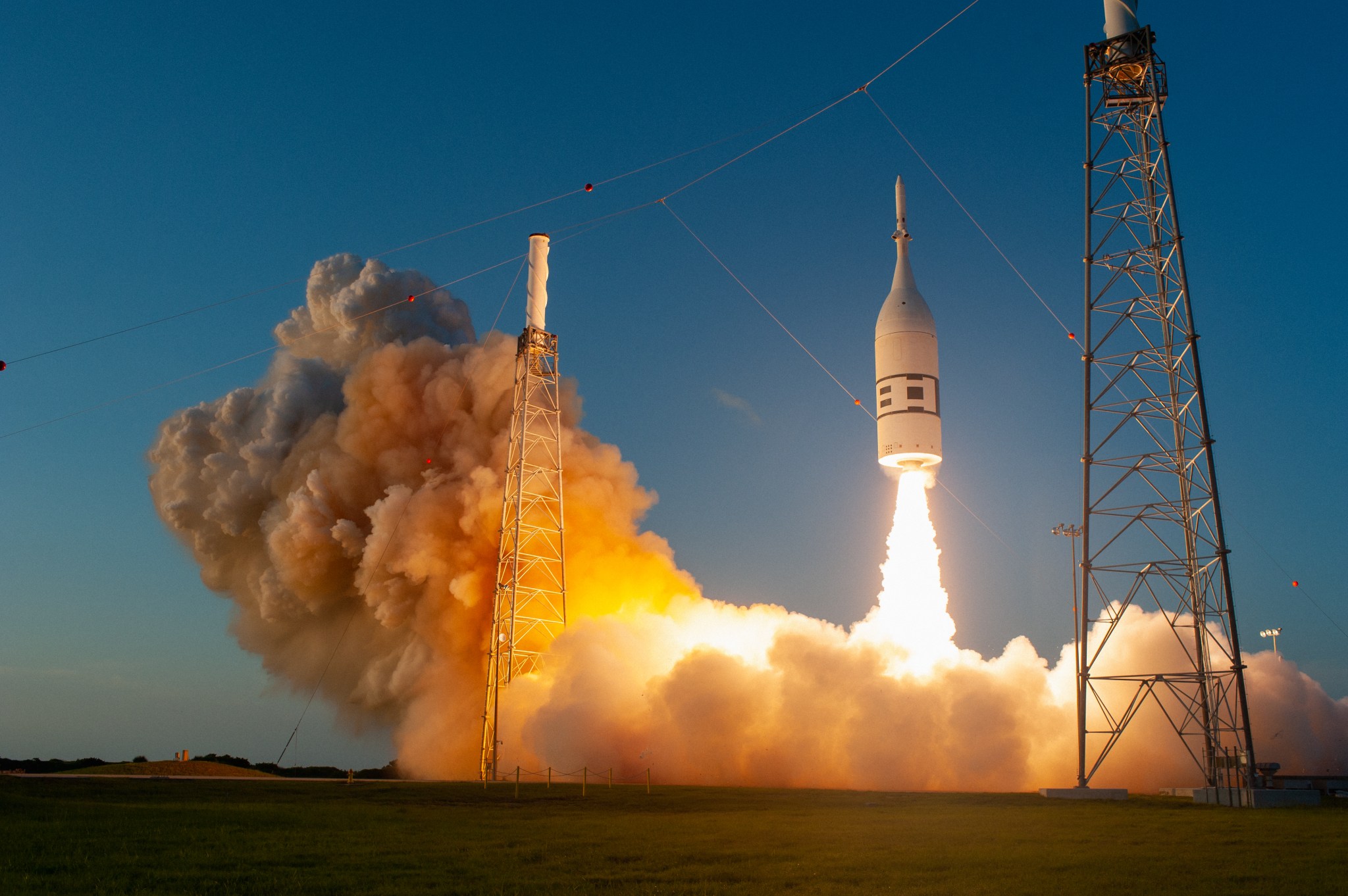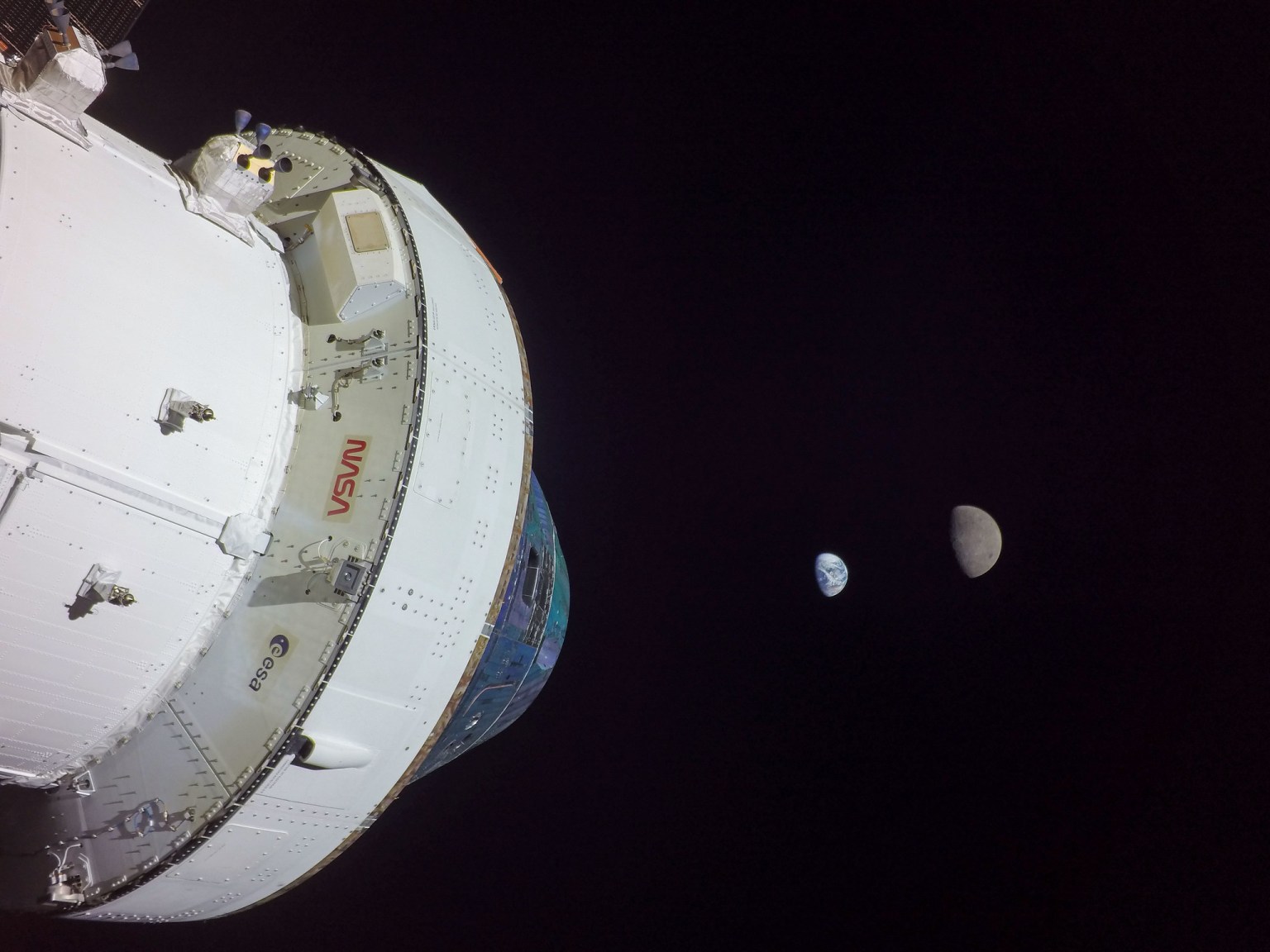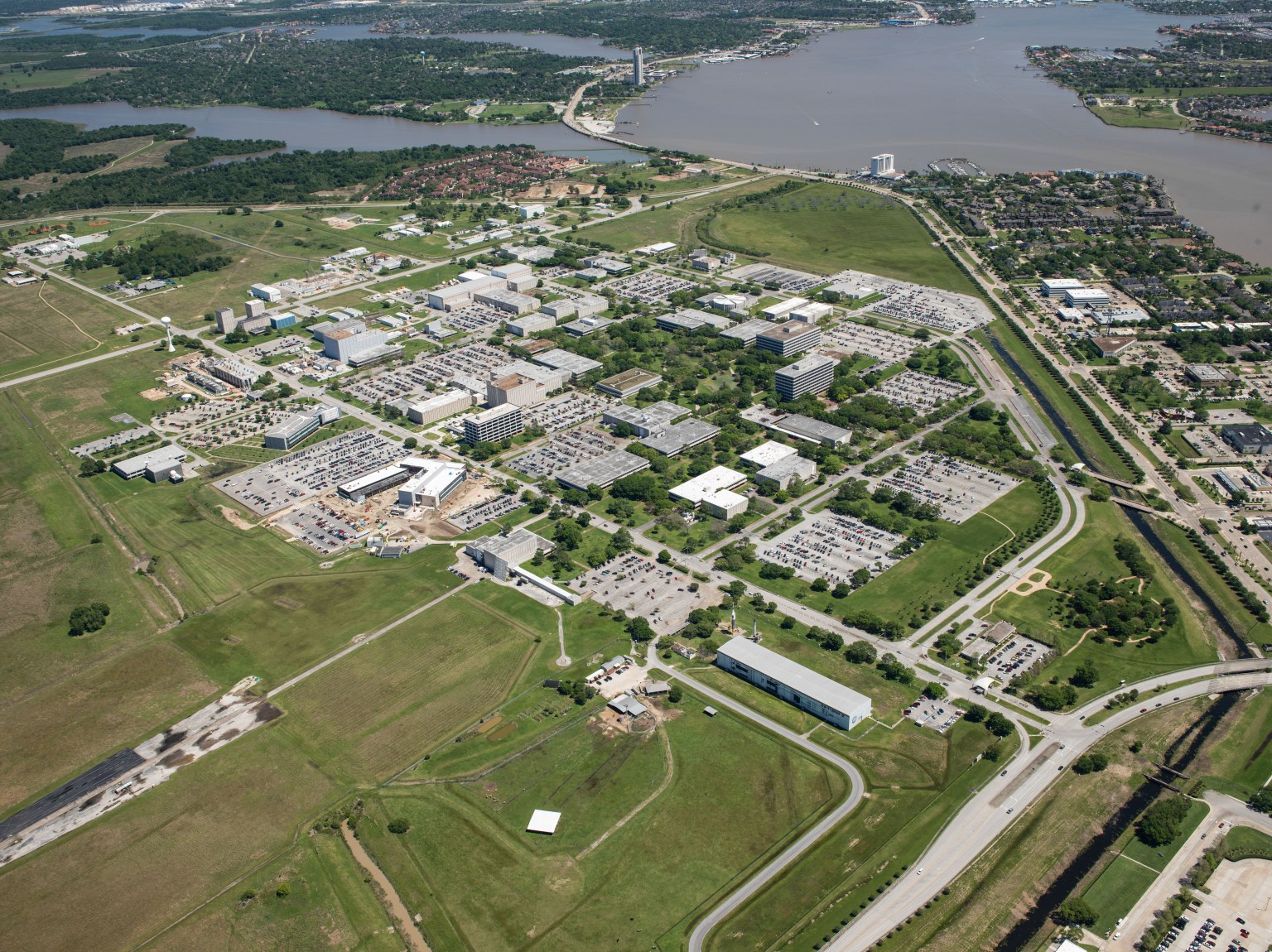Ascent Abort-2
On July 2, 2019, NASA conducted a successful test known as Ascent Abort-2 (AA-2), which tested the Orion launch abort system (LAS), a critical safety system that sits atop Orion at launch and during ascent.
Mission Type
Program
Launch
duration
On July 2, 2019, NASA conducted a successful test known as Ascent Abort-2 (AA-2), which tested the Orion launch abort system (LAS), a critical safety system that sits atop Orion at launch and during ascent. If an emergency occurs during launch, the LAS pulls Orion and its crew away from the rocket for a safe landing in the Atlantic Ocean. Ascent Abort-2 demonstrated this capability of the LAS, propelling the crew module to a safe distance during ascent at a point midway between maximum aerodynamic pressure and maximum aerodynamic drag. This stressing test case, combined with subsystem qualification tests and the successful Pad Abort-1 flight test in 2010, resulted in a LAS that is certified to fly on the Artemis missions with astronauts on board.
During AA-2, a test booster provided by Northrop Grumman launched from Space Launch Complex 46 at Cape Canaveral Air Force Station in Florida at 7 a.m. EDT, carrying a fully functional LAS and a 22,000-pound Orion test vehicle to an altitude of 31,000 feet (approximately six miles) at Mach 1.18 (over 1,000 mph). At that point, the LAS’ powerful reverse-flow abort motor fired 400,000 pounds of thrust, propelling the Orion test vehicle to a safe distance away from the rocket to splashdown in the Atlantic Ocean. The test took approximately three minutes.
A total of 890 developmental flight instrumentation (DFI) measurements were monitored and recorded during
AA-2 on the booster, separation ring, crew module, and LAS. During descent, data from the test was downlinked
as well as recorded on board by 12 data recorders that were ejected from the crew module in pairs starting 20 seconds after LAS jettison. The foam-encased data recorders initiated tracking beacons upon impact and floated in the ocean, enabling their recovery post-test.
Since AA-2 was meant to test Orion’s ability to abort during ascent, it was not equipped with parachutes nor was
the test capsule recovered from the ocean for cost-saving purposes. NASA already fully qualified the parachute
system for flights with crew through an extensive series of 17 developmental tests and 8 qualification tests completed at the end of 2018.
NASA’s prime contractor, Lockheed Martin, provided the fully functional Orion LAS, and the crew module to service module umbilical and flight design retention and release mechanisms. NASA’s Johnson Space Center was responsible for producing the fully assembled and integrated crew module and separation ring. This included development of unique avionics, power, guidance, navigation and control (GN&C), software and data collection subsystems, and the ejectable data recorders. Johnson also provided the operations team responsible for conducting the launch, as well as several elements of ground support equipment used to power and control the spacecraft on the launch pad.
The agency’s Langley Research Center built the primary structure of the crew module test article and a separation ring that connected the test capsule to the booster and provided space and volume for separation mechanisms and instrumentation. Critical sensors and instruments used to gather data during the test were provided by NASA’s Armstrong Flight Research Center. Exploration Ground Systems (EGS) and Jacobs Test and Operations Contract (TOSC) processed the vehicle at NASA’s Kennedy Space Center before launch.
| Launch Date | July 2, 2019, 7:00 A.M. EDT |
| Launch Site | Cape Canaveral Air Force Station, Florida, SLC-46 |
| Duration | 3 min., 13 sec. |
| Altitude | 31,000 ft. (at abort initiation), 55,000 ft. (Orion test vehicle maximum altitude) |






































